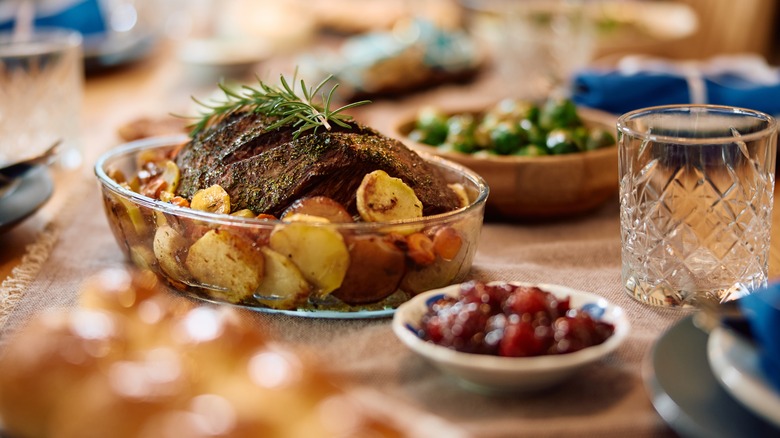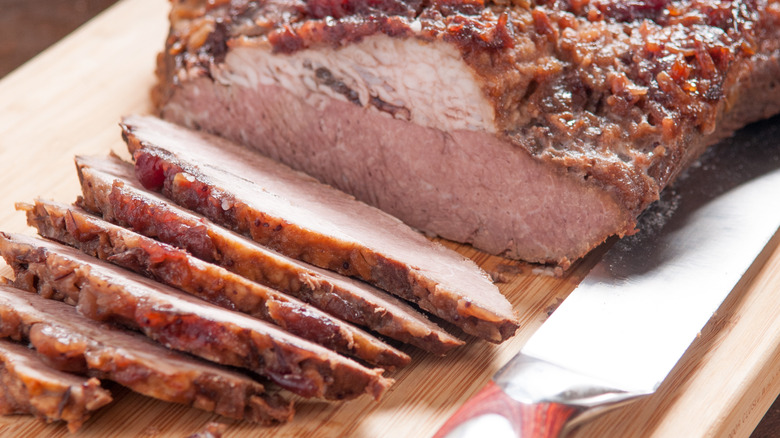Why Brisket Is A Staple In Jewish Cuisine
No Rosh Hashanah table is complete without a plate of braised brisket. Every family has their favored recipe, passed down and adapted through generations, but one thing stays the same. It's always brisket. This is curious, as brisket is famously one of the toughest cuts of beef. It becomes nearly inedible when cooked over high heat, which is why brisket is wasted on the grill, and the only way to make it tender is to cook it for hours over low heat. These challenges have turned many cooks away from brisket altogether, but practical reasons led it to become a staple of Jewish holiday meals, and now families around the world have mastered the art of turning this underrated cut into a tender delight.
The first reason that brisket became a go-to main course at Jewish gatherings is the fact that it's kosher. Beef is only kosher if it comes from the front half of the cow. The hindquarters include the sciatic nerve, which makes all meat from that region treif (non-kosher) unless it is prepared under very specific circumstances that few American producers adhere to. With hindquarter cuts like beef loin and flank off the menu, brisket is one of the largest kosher cuts available, making it a clear choice for large gatherings. That's also why brisket is typically reserved only for holiday meals. It's too excessive for an everyday dinner, but reserving it for special occasions makes it taste even better. Of course, there's more to why brisket is a staple of Jewish cuisine.
Affordability is a key part of brisket's popularity
Brisket's role in Jewish cuisine stretches back to 17th-century Europe, where it was one of the cheapest cuts of beef available. Brisket was widely considered undesirable because it takes a very long time to cook it properly, but this fact actually played to the advantage of Jewish cooks. Judaism traditionally forbids adherents from performing any work on the Sabbath, which lasts from sunset on Friday to sunset on Saturday. With brisket, a Jewish cook could start preparing their meal just before the Sabbath began, then let it simmer unattended over the next 24 hours. By the time the sun set on Saturday, the meat would be ready to eat. It wouldn't work nearly as well with other cuts of meat, as "higher quality" cuts of beef aren't good for braising and other slow-cooking methods.
In the late 1800s, the United States experienced a wave of immigration from Ashkenazi communities in Central Europe. In the new country, brisket continued to provide hearty, affordable meals for the holidays, similar to how corned beef became a New Year's tradition for Irish Americans. Of particular note are Jewish immigrants from Romania, who brought a style of preserved brisket called "pastirma". It would evolve to become pastrami, an anchor of Jewish deli menus to this day.

